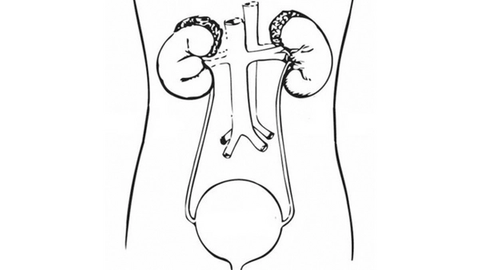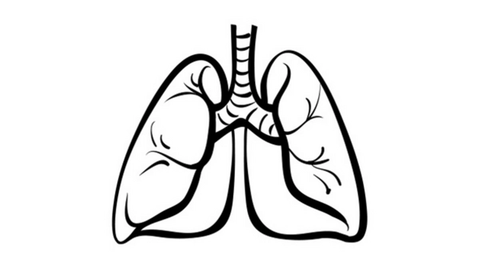Bauman Reviews Data for Patients With RET-Mutated NSCLC
During a Targeted Oncology Case-Based Roundtable event, Jessica Bauman, MD, discussed the case of 59-year-old patient with RET-mutated non–small cell lung cancer.
Jessica Bauman, MD

During a Targeted Oncology Case-Based Roundtable event, Jessica Bauman, MD, chief, Division of Head and Neck Medical Oncology, assistant professor, Department of Hematology/Oncology, associate Program Director, Hematology/Oncology Fellowship Training Program at Fox Chase Cancer Center, discussed the case of 59-year-old patient with RET-mutated non–small cell lung cancer.

Targeted OncologyTM: What systemic therapy are you most likely to offer this patient with RET-rearranged non–small cell lung cancer (NSCLC) up front?
BAUMAN: The National Comprehensive Cancer Network guidelines show that in RET-rearranged positive NSCLC, the preferred frontline therapy is either selpercatinib [Retevmo] or pralsetinib [Gavreto].1 Cabozantinib [Cabometyx] or vandetanib [Caprelsa] are useful in certain circumstances, and I think that’s a relic of that they were the only drugs that had some RET inhibition that we used in the past. Ultimately, [the goal is] to get people on the RET-specific inhibitors quickly.
Can you discuss some of the recent data that support the use of RET-specific inhibitors in NSCLC?
I’d like to talk first about the phase 1/2 LIBRETTO-001 study [NCT03157128], which is the selpercatinib study in RET-fusion–positive NSCLC.2,3 One cohort was treatment naive and received selpercatinib. The second [cohort] was patients who were previously treated with platinum chemotherapy. Whether patients were previously untreated or had previous platinum chemotherapy, they had similar patient characteristics.3 There were many people who were never smokers— which is more common in patients who have RET mutations—who had good performance status and who had adenocarcinoma lung histology. Of those who had had previous platinum chemotherapy, many had previous IO [immunotherapy] as well. About 50% had also had a multitargeted TKI [tyrosine kinase inhibitor], which is important to think about. About 20% of the previously untreated [cohort] had brain metastases, but a little more than one-third in the previous–platinum-chemotherapy [cohort had brain metastases]. The most common [RET fusion across groups] was KIF5B, and the other 2 common [RET fusions] were CCDC6 and NCOA4.
LIBRETTO-001 [had] remarkable results.3 The response rate for patients with previous platinum chemotherapy was 64% to 70% for investigator assessment and independent review, [respectively]. In those who had previously untreated cancer, it was 85% to 90%. In terms of duration of response, there were remarkable numbers. For those [who received] previous platinum chemotherapy, it was somewhere between 17 and 20 months [95% CI, 15.6-24.0],3 so a year and a half PFS [progression-free survival], which is a very remarkable duration of response, similar to what we have seen with some of the other very powerful targeted agents in other populations. In the previously untreated [cohort], their duration of response was not yet evaluable. Part of that is because the median follow-up was still fairly immature on this study. People responded quickly; the median time to response was 1.8 months, and the responses were observed regardless of prior therapy, whether they had had a prior immunotherapy, prior multi-targeted kinase therapy, or no matter what RET-fusion partner they had.
The other remarkable thing about the LIBRETTO-001 trial is that they also showed intracranial activity— 10 out of 11 patients, 91% [95% CI, 59%-100%], who had measurable CNS [lesions at baseline] had a response.3 The median duration of response was 10.1 months. [There was also a larger cohort] who had CNS disease that had 22 [patients].4 They saw a significant response: 81% [95% CI, 59.7-94.8%] of people responded in this cohort of 22, and the duration of response was 9.4 months [95% CI, 7.4–not evaluable]. In terms of PFS for the [cohort who had previous platinum chemotherapy in the] larger population, there was median PFS of 16.5 or 18.4 months.3 [We have not seen the final results of the analysis for] the previously untreated cohort, given that the follow-up time was shorter. But the 1-year PFS rate in the previously treated cohort was in the 60s, and 75% in the previously untreated [cohort].
The most common adverse events [AEs] were diarrhea, dry mouth, hypertension, and liver function test abnormalities, [which were] were low grade, but relatively common.3,5
We also saw edema, headaches, and some other gastrointestinal toxicities. QT prolongation, which was not that common, is something to consider for selpercatinib, because we saw some QT prolongation as part of this study. Because of the phase 1/2 [LIBRETTO-001] study, we saw on May 8, 2020, that the FDA gave accelerated approval to selpercatinib in adult patients with NSCLC with RET fusions.6 We also saw the approval in RET-mutant medullary thyroid cancer.
What were other studies that showed efficacy for this patient population?
Pralsetinib was also in a phase 1/2 study, which was the ARROW study [NCT03037385].7 It is given as once-daily dosing, which is different from selpercatinib, which is dosed twice a day.5,8 [ARROW] also went into a phase 2 dose expansion, with primary end points of ORR [overall response rate] and safety, and secondary end points of duration of response, disease control rate, and clinical benefit rate.7
When you look at the characteristics of pralsetinib, it looks similar to what we saw in the selpercatinib study. In terms of history of CNS or current CNS, it’s about 40% in [both] treatment-na ve and prior platinum [chemotherapy].7,8 People in the prior platinum [treatment cohort] had a median of 2 prior therapies, and many had kinase inhibitors, as well as immunotherapy, which is helpful to interpret the data. We also saw similar RET-fusion partners in this study.
In terms of efficacy for pralsetinib, there was a similar ORR; 70% for patients who were treatment naive and about 60% in postplatinum chemotherapy.7,8 The duration of response that we have so far is somewhat less than selpercatinib, with a median of 9 months in the treatment- naive cohort, and in the post-platinum chemotherapy [cohort] it was not yet evaluable. Though I will say this study was immature. We still do not have a final publication, or even an initial publication from this study, which I hope that we’ll have soon so that we can better interpret these data. But what [we have seen so far] is that over 50% of patients had a duration of response greater than 6 months in both cohorts. Only 8 people had measurable CNS disease, but 50% of them had responses in their intracranial lesions, and 75% of those had duration of response greater than or equal to 6 months. The AEs were milder than some of the multitargeted TKIs, the most common being fatigue, mild gastrointestinal AEs, diarrhea, and constipation.8 Musculoskeletal pain is one of the more common AEs, and there was also some hypertension. There is also a risk of pneumonitis or interstitial lung disease [ILD], which we did not see with selpercatinib [though it is less common than other AEs]. About a third of patients had dose reductions [because of AEs]. [Laboratory abnormalities included decreased lymphocytes and decreased neutrophils]. With these data in mind, the FDA approved pralsetinib in 2020 for NSCLC as well as medullary thyroid cancer.9,10
From your perspective, what are the similarities and differences between selpercatinib and pralsetinib in terms of convenience, safety, and efficacy?
The [convenience] issue of twice-daily dosing [with selpercatinib] vs once daily [with pralsetinib should be considered].5,8 Selpercatinib is dosed based on weight, so for patients who are greater than or equal to 50 kg, it’s a higher dose, 160 mg twice daily; whereas for patients [less than 50 kg], it’s 120 mg twice daily.5 [Pralsetinib is dosed at 400 mg daily, regardless of weight.8]
In terms of the [safety] concerns, selpercatinib [has more] hepatotoxicity and QT prolongation.5 [With] pralsetinib, you worry more about ILD and pneumonitis.8
There is a label warning for tumor lysis syndrome with pralsetinib [in medullary thyroid cancer], which was not seen in the lung cancer cohort. When you do a cross-trial comparison [for efficacy], some of the response rates for selpercatinib do look a little better, as well as the duration of response.3,5,7,8 But I think we also need longer follow-up for both studies to really understand those data.
What should influence recommendation of a frontline RET inhibitor?
[Consider] the site of the disease. [For example], whether there’s CNS involvement—what the mutational profile looks like. [We consider] convenience for the patients, quality of life, patient satisfaction, financial toxicity, and other patient factors. I think that all of these are things that we think about as oncologists when we’re choosing the drug to prescribe.
REFERENCES
1. NCCN. Clinical Practice Guidelines in Oncology. Non–small cell lung cancer, version 4.2021. Accessed May 19, 2021. https://bit.ly/35kO18V
2. Goto K, Oxnard GR, Tan, DS, et al. Selpercatinib (LOXO-292) in patients with RET fusion-positive non–small cell lung cancer. J Clin Oncol. 2020; 38(suppl 15):3584. doi:10.1200/JCO.2020.38.15_suppl.3584
3. Drilon A, Oxnard GR, Tan DSW, et al. Efficacy of selpercatinib in RET fusion-positive non–small-cell lung cancer. N Engl J Med. 2020;383(9):813-824. doi:10.1056/NEJMoa2005653
4. Subbiah V, Hu MIN, Gainor JF, et al. Clinical activity of the RET inhibitor pralsetinib (BLU-667) in patients with RET fusion-positive solid tumors. J Clin Oncol. 2020;38(suppl 15):109. doi:10.1200/JCO.2020.38.15_suppl.109
5. Retevmo. Prescribing information. Eli Lilly and Company; 2021. Accessed May 20, 2021. https://bit.ly/3umZhLk
6. FDA approves selpercatinib for lung and thyroid cancers with RET gene mutations or fusions. News release. FDA. Updated May 11, 2020. Accessed May 20, 2021. https://bit.ly/3hPMahq
7. Gainor JF, Curigliano G, Kim DW, et al. Registrational dataset from the phase I/II ARROW trial of pralsetinib (BLU-667) in patients (pts) with advanced RET fusion+ non–small cell lung cancer (NSCLC). J Cln Oncol. 2020;38(suppl 15):9515. doi:10.1200/JCO.2020.38.15_suppl.9515
8. Gavreto. Prescribing information. Blueprint Medicines Corp; 2020. Accessed May 20, 2021. https://bit.ly/3kMI8b1
9. FDA approves pralsetinib for lung cancer with RET gene fusions. News release.. Updated September 8, 2020. Accessed May 20, 2021. https://bit.ly/3nm0C1I
10. FDA approves pralsetinib for RET-altered thyroid cancers. News release. FDA. December 1, 2020. Accessed May 20, 2021. https://bit.ly/2VqIqsi













